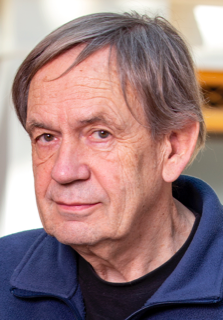
Gerhard Wagner, Ph.D.
Our research is concerned with structures of proteins and protein complexes and their functional roles. We use NMR spectroscopy, other biophysical techniques, computational tools and small molecule inhibitors to reveal mechanisms and cellular significance of protein interactions.
The primary structural focus is on how eukaryotic translation initiation regulates the fate of cells. In particular, we are interested in the interaction of the cap-binding proteins eIF4E with the mRNA cap, the scaffold protein eIF4G, and the regulatory 4E-BPs, and how these interactions are related to cell transformation and apoptosis. To address this, we have identified small-molecule inhibitors of the eIF4E/eIF4G interaction and found that these may have anti-tumor activity. We are also interested in interactions of other eukaryotic initiation factors including eIF4G, eIF4A, eIF4B, eIF3, and in identifying small-molecule inhibitors as potential therapeutic agents.
We also seek to understand mechanisms of T-cell function from structural studies. This includes the abTCR and the associated CD3 complexes. In addition, we try to understand mechanisms of downstream signaling at the level of nuclear translocation of nuclear factor of activated T cells (NFAT) through de-phosphorylation by calcineurin.
We are interested in protein-protein interactions in apoptosis. These include molecules from the Bcl-2 family and the mitochondrial membrane protein VDAC, and proteins that interact with VDAC. Recently we have developed procedures for incorporating membrane proteins in covalently circularized phospholipid nanodiscs creating stable membrane protein preparations usable for numerous membrane protein studies and membrane protein complexes.
Address:
Room C1-112
240 Longwood Avenue
Boston, MA 02115
Trends Biochem Sci
View full abstract on Pubmed
J Immunol
View full abstract on Pubmed
Curr Opin Struct Biol
View full abstract on Pubmed
J Biomol NMR
View full abstract on Pubmed
J Biomol NMR
View full abstract on Pubmed
Biomol NMR Assign
View full abstract on Pubmed
J Am Chem Soc
View full abstract on Pubmed